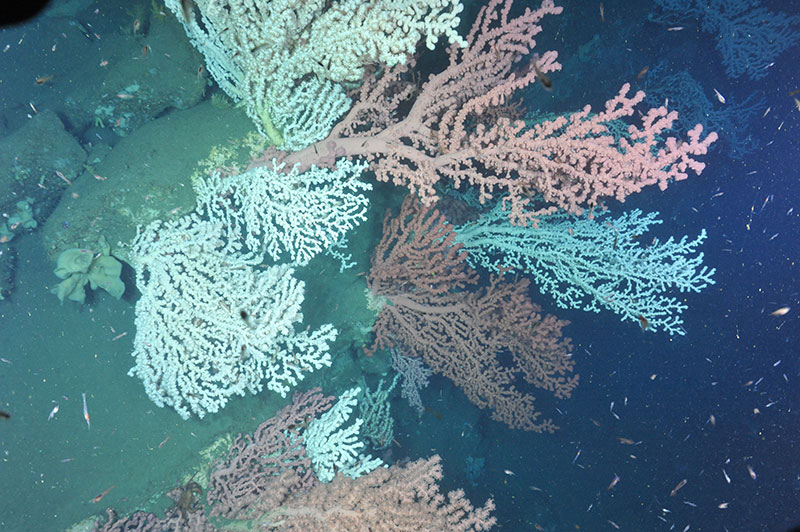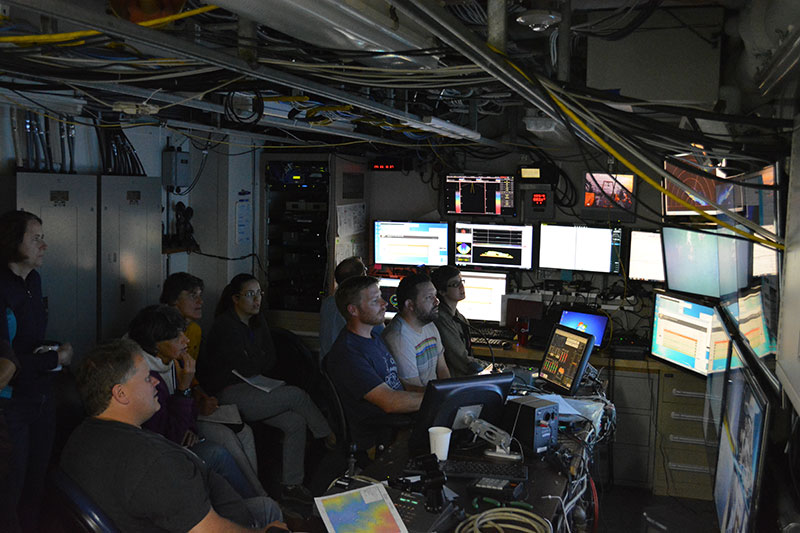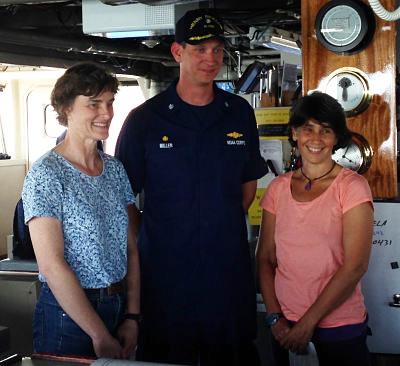
by Dr. Martha Nizinski, Zoologist, NOAA Office of Science and Technology, National Systematics Laboratory
Dr. Anna Metaxas, Professor, Dalhousie University

U.S. and Canadian scientists return for a second collaborative cruise in search of deep-sea coral habitats like this one observed in Heezen Canyon. Image courtesy of 2014 Bigelow-ROPOS US-Canada Gulf of Maine Collaboration. Download larger version (jpg, 7.9 MB).
Living marine resources have no geopolitical boundaries. Managing each nation’s resources requires a strong scientific and management enterprise strengthened by our ability to work effectively with our international partners. U.S. and Canadian scientists share many deep-sea coral research interests, thus planning for transboundary collaborations was a logical next step. We have been working together to procure money and resources in support of fieldwork to address research priorities to both nations in the northern Gulf of Maine and along the continental margin and slope. These types of projects open lines of communication between federal agencies to manage and protect marine resources.
Fisheries and deep-sea corals do not recognize boundaries, therefore collaborative research should be conducted in both U.S. and Canadian waters. It is this sentiment that brought our research teams together in 2011.

The science team gathers in the ROPOS command center aboard NOAA Ship Henry Bigelow to view images from the seafloor in the northern Gulf of Maine. Image courtesy of 2014 Bigelow-ROPOS US-Canada Gulf of Maine Collaboration. Download larger version (jpg, 12.6 MB).
After three years of planning, coordinating ship and remotely operated vehicle (ROV) schedules, and procuring funding, everything fell into place and we set sail in 2014 on our first international collaborative cruise. Our primary objective was to explore and survey deep-sea coral habitats in submarine canyons off the coast of the Northeast U.S. and Atlantic Canada, as well as several locations in the northern Gulf of Maine.
Scientific teams from each side of the border were selected to enhance our ability to better understand these deep-sea communities. Video; still imagery; physical samples of a variety of invertebrates including deep-sea corals, sediment cores, and water samples; and multibeam bathymetry were all collected and shared among the science team.
Through our efforts, we gained a better understanding of coral diversity, abundance, and distribution; tested and ground-truthed habitat suitability models; collected samples for taxonomy, coral aging, and reproduction; refined estimates of coral recruitment; and examined the relationship between biodiversity and ecosystem function. Additionally, we were able to provide NOAA, the New England Fishery Management Council, and the Department of Fisheries and Oceans Canada with contemporary data to better inform and guide the conservation of living marine resources.

Chief scientists Martha Nizinski (left) and Anna Metaxas (right) on the bridge of NOAA Ship Henry B. Bigelow with the ship's Commanding Officer at the time, Mark Miller (center), before the first collaborative cruise in 2014. Image courtesy of Teri Frady, NEFSC/NOAA. Download image (jpg, 113 KB).
Building on our highly successful collaboration in 2014, we are ready to head out again to continue the work we began three years ago. As we increase the extent of the area we will investigate and survey new locations, we will add to our knowledge and allow for better assessments of distribution and abundances of transboundary coral species and associated fauna.
But our work will not stop here! New research initiatives in Europe and Canada have sparked a renewed interest in transatlantic cooperation. Our work would contribute to the efforts underway in support of the Galway Statement on Atlantic Ocean Cooperation. Through partnerships and collaborations, we can accomplish so much more.